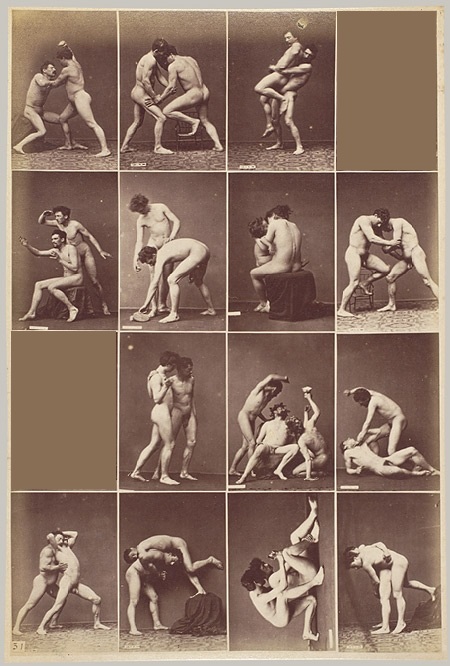gorgik9
Super Vip
- Joined
- Dec 3, 2010
- Messages
- 14,714
- Reaction score
- 18,526
- Points
- 120
Academy and Art, part 2.
A neew list of artists! Maybe I should have said that in the posts titled "Academy and Art" I'll post the artists in roughly chronological order, starting in Part 1 with the eldest!
Johan Tobias Sergel (1740-1814, Swedish sculptor)




Pierre Lelu (1741-1810)


Joseph Benoit Suvee (1743-1807)



Francois-Guillaume Ménageot (1744-1816)




Pierre Cacault (1744-1810)

Jean-Joseph Taillason (1745-1809)



Francois-André Vincent (1746-1816)




Jacques Louis David (1748-1825)




David's self portrait

Neo-Classicism and Rococo.
The list above ends with the French painter who became the most influential artist in France in the era of the French revolution and the era of Napoleon Bonapart. It was David who through his many students in the French Academy of Art made sure that Neo-Classicism would become the artistic style of Jacobin political radicalism, so I think the right thing to do now is to try to explain the difference between neo-classicism and the "good old" Classicism of the 17th and early 18th century.
The concept of Neo-classicism can be interpreted in various ways, but in my opinion it's useful to look at it as an artistic movement emerging in the 1770's
from a set of specific pre-suppositions that didn't exist before.
So, first, we have the influential writings of Johann Joachim Winckelmann (1717-1768) published in the 1750's and 1760's, including his magnum opus Geschichte des Kunst Des Alterthums (History of the art of antiquity), 1764; he quite simply became one of the most influential scholarly writers in the second half of the 18th century.
Winckelmann's writings were characterised by an in many ways amazingly open male homoeroticism.
The second thing to note is the consequential chain of events unfolding out of the archeological excavations in Herculaneum and Pompeji, gaining momentum from about 1750, which in the long run meant an entirely new perspective on ancient art, culture and society. (Later in this thread I'll make a post discussing the connections between the Pompeji excavations and the emerging of the modern concept of pornography.)
The third pre-supposition was the relentlessly masculine homosocial community of European artists living and working in Rome. Neo-Classicism in many ways was an art movement with its origins in Rome, the place and environment where Winckelmann became Winckelmann and David became David.
Thefourth pre-supposition is more negative and oppositional: It's about the neo-classicist artists disdain for Louis XV's official mistress Mme de Pompadour, for effeminacy in art and society, and in particular the disdain for the Rococo style in painting, sculpture and design. The slogan of the Jacobin Davidians was: "-Van Loo, Rococo, Pompadour!" (Carle Van Loo was one of the more influential Rococo painters.)
So I think we must post a couple of examples of Rococo painting vehemently opposed by the neo-classicists!
Francois Boucher (1703-1770)


Carle Van Loo (1705-1765)


A neew list of artists! Maybe I should have said that in the posts titled "Academy and Art" I'll post the artists in roughly chronological order, starting in Part 1 with the eldest!
Johan Tobias Sergel (1740-1814, Swedish sculptor)




Pierre Lelu (1741-1810)


Joseph Benoit Suvee (1743-1807)



Francois-Guillaume Ménageot (1744-1816)




Pierre Cacault (1744-1810)

Jean-Joseph Taillason (1745-1809)



Francois-André Vincent (1746-1816)




Jacques Louis David (1748-1825)




David's self portrait

Neo-Classicism and Rococo.
The list above ends with the French painter who became the most influential artist in France in the era of the French revolution and the era of Napoleon Bonapart. It was David who through his many students in the French Academy of Art made sure that Neo-Classicism would become the artistic style of Jacobin political radicalism, so I think the right thing to do now is to try to explain the difference between neo-classicism and the "good old" Classicism of the 17th and early 18th century.
The concept of Neo-classicism can be interpreted in various ways, but in my opinion it's useful to look at it as an artistic movement emerging in the 1770's
from a set of specific pre-suppositions that didn't exist before.
So, first, we have the influential writings of Johann Joachim Winckelmann (1717-1768) published in the 1750's and 1760's, including his magnum opus Geschichte des Kunst Des Alterthums (History of the art of antiquity), 1764; he quite simply became one of the most influential scholarly writers in the second half of the 18th century.
Winckelmann's writings were characterised by an in many ways amazingly open male homoeroticism.
The second thing to note is the consequential chain of events unfolding out of the archeological excavations in Herculaneum and Pompeji, gaining momentum from about 1750, which in the long run meant an entirely new perspective on ancient art, culture and society. (Later in this thread I'll make a post discussing the connections between the Pompeji excavations and the emerging of the modern concept of pornography.)
The third pre-supposition was the relentlessly masculine homosocial community of European artists living and working in Rome. Neo-Classicism in many ways was an art movement with its origins in Rome, the place and environment where Winckelmann became Winckelmann and David became David.
Thefourth pre-supposition is more negative and oppositional: It's about the neo-classicist artists disdain for Louis XV's official mistress Mme de Pompadour, for effeminacy in art and society, and in particular the disdain for the Rococo style in painting, sculpture and design. The slogan of the Jacobin Davidians was: "-Van Loo, Rococo, Pompadour!" (Carle Van Loo was one of the more influential Rococo painters.)
So I think we must post a couple of examples of Rococo painting vehemently opposed by the neo-classicists!
Francois Boucher (1703-1770)


Carle Van Loo (1705-1765)








































































































